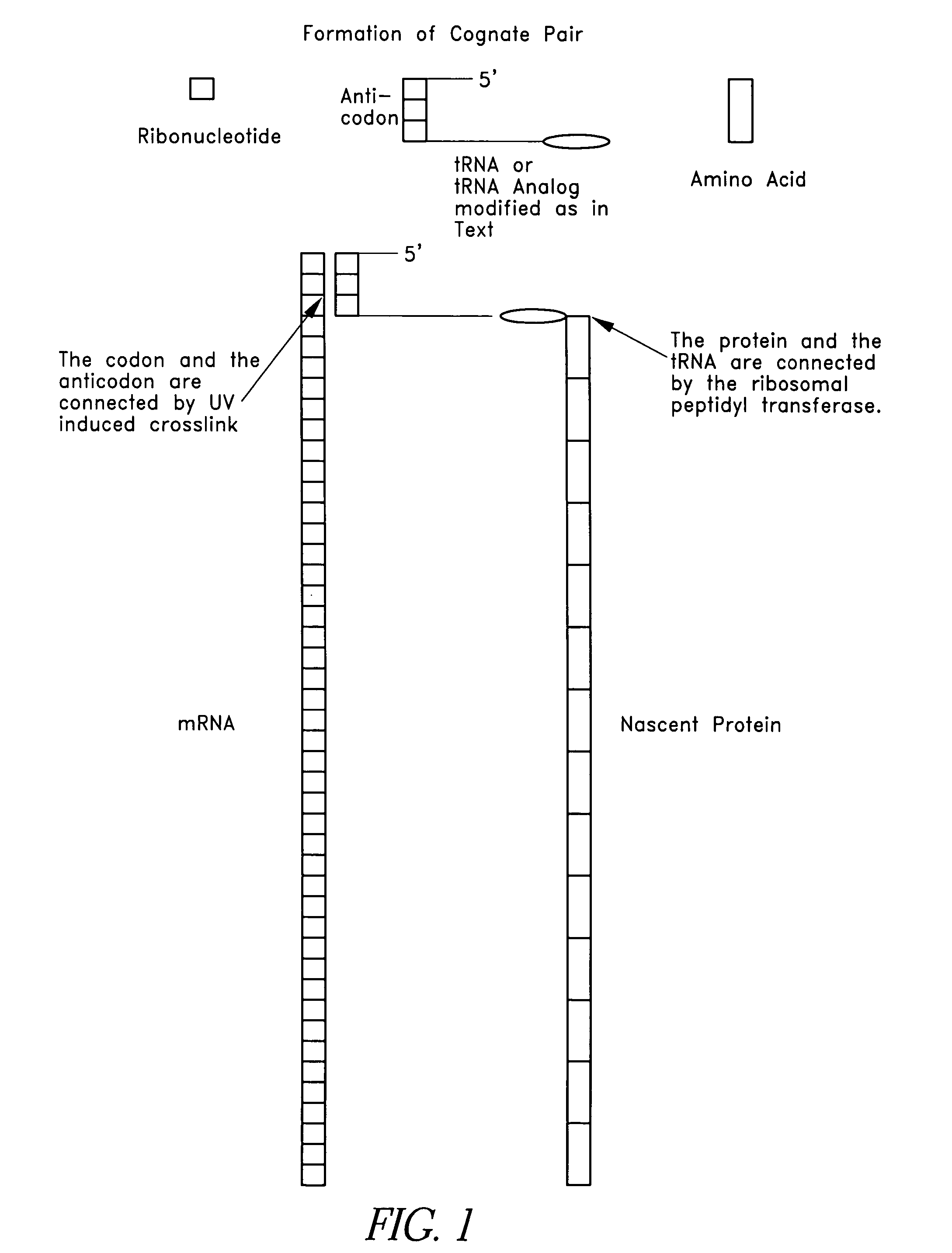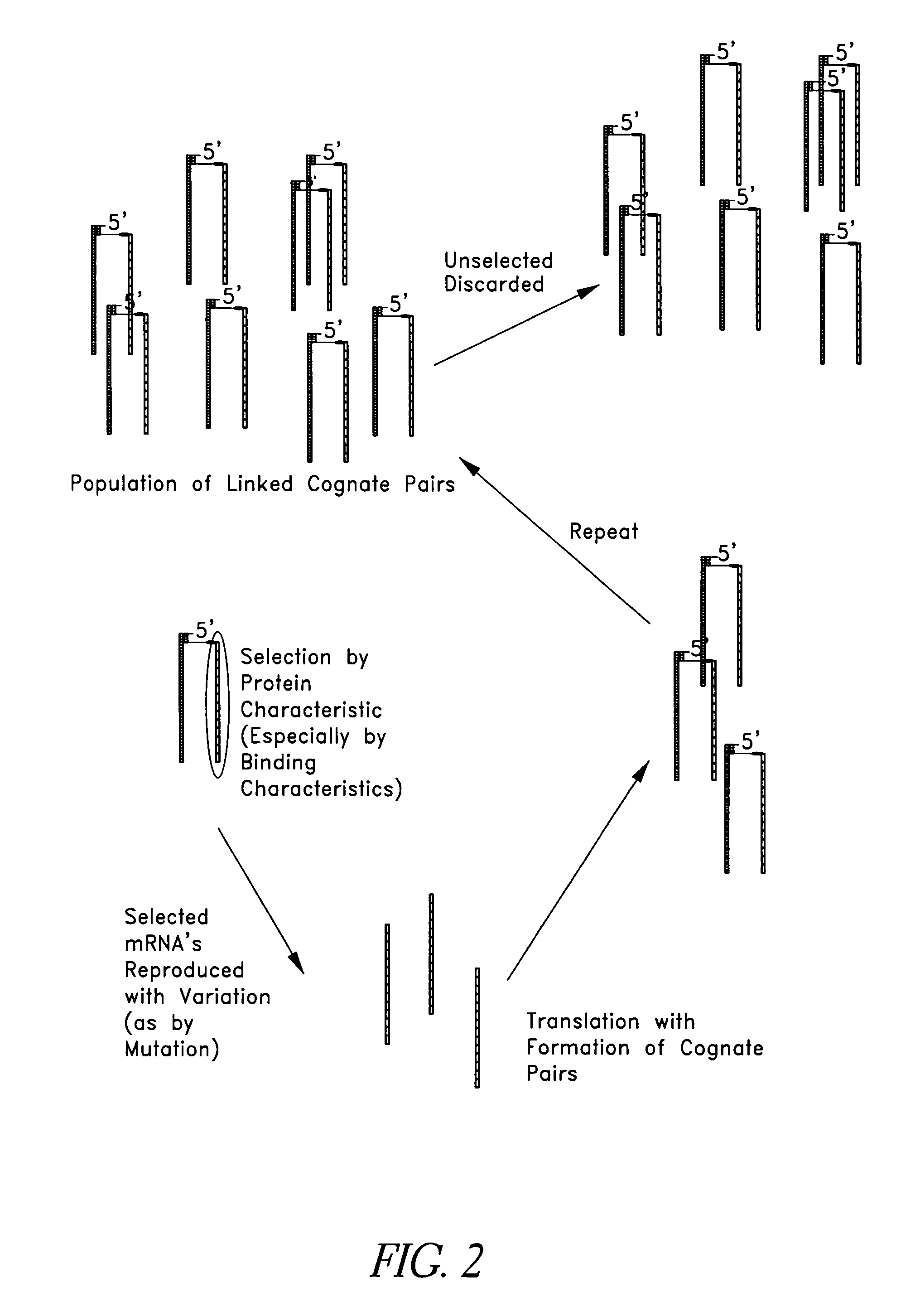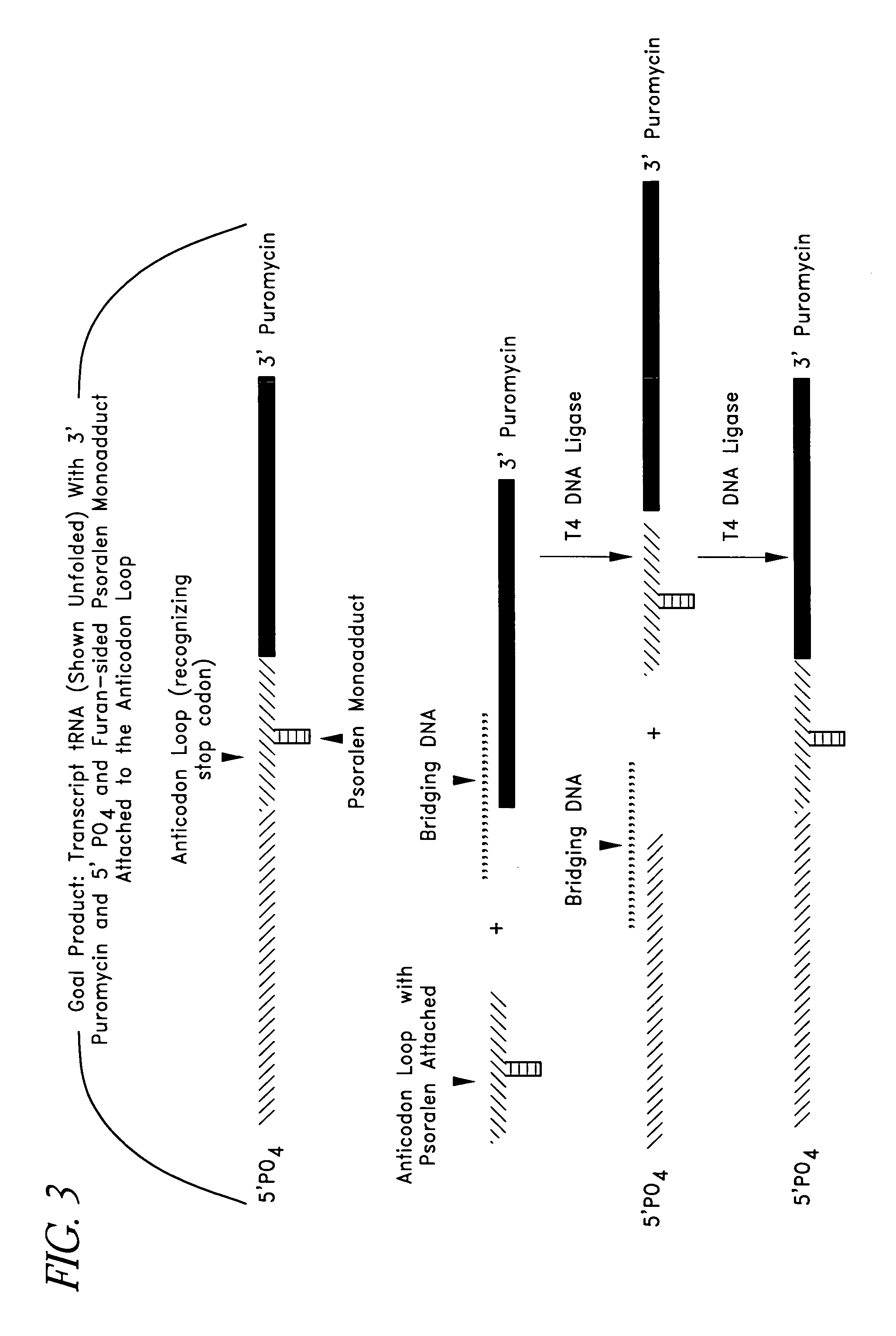Compositions and methods for the identification and selection of nucleic acids and polypeptides
a technology of polypeptides and nucleic acids, applied in the field of compositions and methods for the can solve the problems of invivo methods, cumbersome screening steps, limited library size, etc., and achieve the effect of efficient and rapid identification and selection of nucleic acids and polypeptides
- Summary
- Abstract
- Description
- Claims
- Application Information
AI Technical Summary
Benefits of technology
Problems solved by technology
Method used
Image
Examples
example 1
Production of the SATA Using Uridine
[0130]One skilled in the art will understand that the SATA can be produced in a number of different ways. The protocols described below in the following examples can be used for SATAs that have both a puromycin and a crosslinker on the tRNA, or that have a puromycin on the tRNA and a crosslinker on the mRNA. Where the crosslinker is on the mRNA, Example 4, below, provides guidance. The following protocol is also instructive for Linking tRNA Analogs, in the sense that Linking tRNA Analogs also, in a preferred embodiments, have a crosslinker on the tRNA.
[0131]For example, in a preferred embodiment, three fragments (FIG. 1) were purchased from a commercial source (e.g., Dharnacon Research Inc., Boulder, Colo.). Modified bases and a fragment 3 with a pre-attached puromycin on its 3′ end and a PO4 on its 3′ end were included, all of which were available commercially. Three fragments were used to facilitate manipulation of the fragment 2 in forming the ...
example 2
Production of the SATA Using Pseudouridine
[0204]As discussed above, one skilled in the art will appreciate that the SATA, Linking tRNA Analog and Nonsense Suppressor tRNA can be produced in a number of different ways. FIG. 5 shows the chemical structures for uridine and pseudouridine. Pseudouridine is a naturally occurring base found in tRNA that forms hydrogen bonds just as uridine does, but lacks the 5-6 double bond that is the target for psoralen. Pseudouridine, as used herein, shall include the naturally occurring base and any synthetic analogs or modifications. In a preferred embodiment, the SATA was produced using pseudouridine. Linking tRNA Analog can also be produced using pseudouridine. Specifically, in a preferred embodiment, three fragments (FIG. 1) were purchased from a commercial source (Dharmacon Research Inc., Boulder, Colo.). Modified bases and a fragment 3 (“Fragment 3”) with a pre-attached puromycin on its 3′ end and a PO4 on its 3′ end were included, all of which ...
example 3
Production of Linking tRNA Analog Using Ribonucleotides Modified to Form Crosslinkers: Use of Psoralen and Non-Psoralen Crosslinkers
[0296]As described above, pseudouridine can be used in some embodiments to minimize the formation of unwanted monoadducts and crosslinks. In one embodiment, a crosslinker modified mononucleotide is formed and used. One advantage of the crosslinker modified mononucleotide is that it minimizes the formation of undesirable monoadducts and crosslinks.
[0297]As discussed above, one skilled in the art will appreciate that the SATA, Linking tRNA Analog, and Nonsense Suppressor Analog can be produced in a number of different ways. In a preferred embodiment, psoralenated uridine 5′ mononucleotide, 2-thiocytosine, 2-thiouridine, 4-thiouridine 5-iodocytosine, 5-iodouridine, 5-bromouridine or 2-chloroadenosine can be produced or purchased and enzymatically ligated to an oligonucleotide to be incorporated into a tRNA analog. Aryl azides, and analogues of aryl azides,...
PUM
| Property | Measurement | Unit |
|---|---|---|
| temperature | aaaaa | aaaaa |
| wavelength | aaaaa | aaaaa |
| volumes | aaaaa | aaaaa |
Abstract
Description
Claims
Application Information
 Login to View More
Login to View More - R&D
- Intellectual Property
- Life Sciences
- Materials
- Tech Scout
- Unparalleled Data Quality
- Higher Quality Content
- 60% Fewer Hallucinations
Browse by: Latest US Patents, China's latest patents, Technical Efficacy Thesaurus, Application Domain, Technology Topic, Popular Technical Reports.
© 2025 PatSnap. All rights reserved.Legal|Privacy policy|Modern Slavery Act Transparency Statement|Sitemap|About US| Contact US: help@patsnap.com



